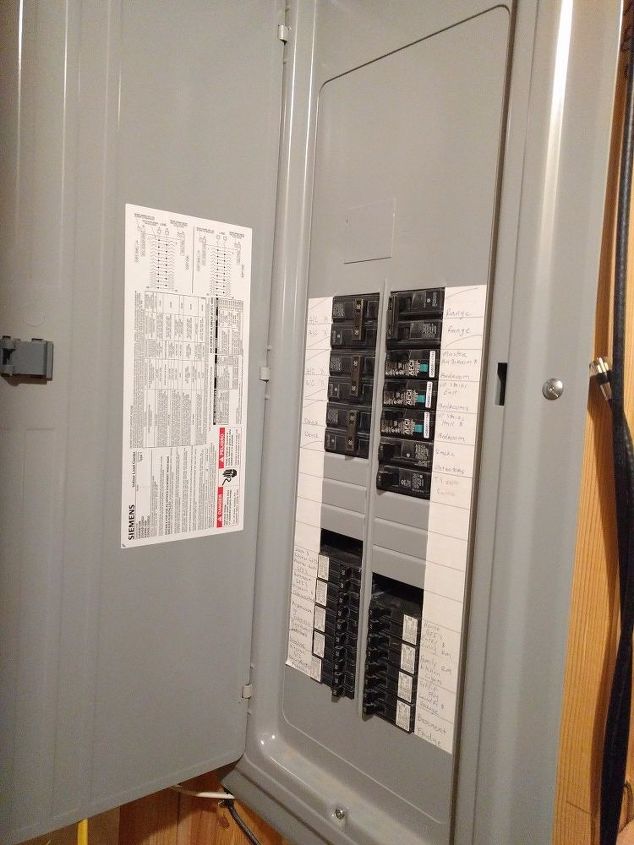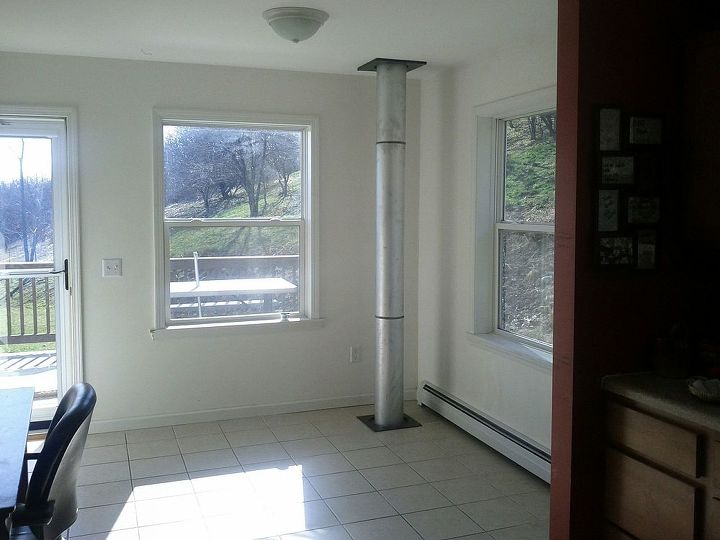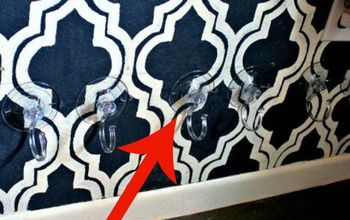What could be wrong with our electricity?


Related Discussions
How to get rid of mice?
We seem to have some unwelcome Mickeys and Minnies in our house. What is the best way to get rid of them?
How to remove popcorn ceiling with asbestos?
I want to remove my popcorn ceiling, but it has asbestos in it. How do I go about this safely?
How to caulk baseboard gaps?
How do I fill gaps at baseboard, should I caulk? If so, does anyone know how to caulk baseboards?
How to fix squeaky hardwood floors?
How do I fix squeaky hardwood floors?
How do I kill the power from my main breaker?
I have a home built in 2006, the main panel does not seem to have a main breaker...? See attached pic of the main panel. It's a Siemens G3040 200 amp panel. Outs... See more
Any Ideas for this corner with the wood stove pipe?
I am unclear as to what to do with this part of my house, "The Breakfast Nook".






I am not an electrician but was married to one for many years. (my credentials hehe). This would probably be one of the most difficult problems to troubleshoot within your electrical system and I would like to suggest you start with the most obvious, but often overlooked item - the light bulbs! Is it possible that a lot of the same make was purchased which is sub-standard? You also don't say if it is incadescent bulbs or fluorescent (power saver) bulbs? If the bulbs are popping in the same fitting all the time, the fitting could be checked to ensure there's nothing which could cause this, but I doubt very much if it is related to the installation of the light points.
If you do have access to equipment for testing your electrical supply, it would be the next step to check if your current is stable, i.e. no dips or spikes in the supply from the council mains. Severe fluctuations in current would manifest in the weakest points being affected first, i.e. light bulbs or appliances which have built-in fuses (like stoves or lightning protective devices). If this is at the root of your problem it would be good to check if somebody in your neighbourhood is not possibly using heavy machinery at home, like welding equipment, which would cause dips and spikes. This fault could cause endless problems to your appliances and electronic equipment so a current equalizer could be a solution, albeit expensive if the fluctuations are big.
I hope you find the problem soon - replacing bulbs at such short intervals can become an extremely expensive "hobby" :-)
You're welcome!
Light bulbs burning out too often and too soon is a common headache for homeowners. You had light fixtures installed in your home for safety and convenience, yet the bulbs just don’t seem to last.The first thing to check is the wattage limitations of the fixture itself. Installing a 200 watt bulb in a fixture rated for 60 watts not only will cause the 200 watt bulb to burn out too quickly, but it also becomes a fire hazard. This is due to the excessive heat that will build up in the fixture and surrounding area.
The next thing to check is the quality of the bulb. Not all bulbs are the same. There are good bulbs and there are cheap bulbs. Buying a name-brand bulb instead of an unknown brand generally works out better.
If you’ve made sure you’ve got the correct wattage of quality bulbs installed and you still are replacing them too often, it may be due to excessive vibration. Some bulbs are subject to shaking simply due to their location. Fixtures near a door are a prime example. Another source of vibration may be the occupants of the building, such as a childs bedroom, or equipment such as an exercise room. The constant movement of these items shakes the walls, floors & cielings, and that vibration is transferred to the bulb's filament. If the fixture can be outfitted with 'rough-service' bulbs, that would be one option to try. Rough service bulbs may also be called garage-door operator bulbs, appliance bulbs, or ceiling fan bulbs. They are designed with additional support for the filament than a standard bulb. Another option to look at is Compact Fluorescent (CF) bulbs, which have no filament. And with todays' advancing technology, you may want to look into Light-Emitting-Diode (LED) lights as well.
If none of the above suggestions seem to help, there’s one more thing to try.
And it comes as a surprise to many that there actually are right and wrong ways to proverbially, ‘screw in a light bulb'. You may be twisting them into the socket too tightly. By ‘cranking down’ on a bulb during installation you may be causing the most damage to the bulb and socket. Premature bulb failure is often caused by bulbs that have been installed too tightly into light fixtures.
Look into the base of a light fixture socket and you will see a brass tab. This tab is bent at an angle when the fixtures are new and will spring back and forth if depressed slightly. Now take several new light bulbs and inspect the base of each one. You will quickly notice that the bottom of most light bulbs has a small dot of solder in the center of the base. More importantly the size of this drop of solder is not exactly consistent. It is close in size, but not always the same size or height.
If there is a poor connection between the brass tab and the base of the bulb, the connection may heat up, and this heat cause the filament to burn out too soon.
To prevent this, you must be sure the brass tab is always at about a 30 degree angle inside the bottom of the socket. People who twist bulbs in tightly will depress and flatten the tab so it does not spring back when a bulb is replaced.
If you discover the tab is flattened, then you must turn off the power to the lights at the switch. As an additional safety measure, turn off the circuit breaker to the lights. Use a needle-nose pliers and carefully grasp the sides of the brass tab and slowly pull it up so the end of the tab is about one quarter inch off the base of the socket.
When you install a bulb always do so with the power off and the light switch on. Screw the bulb in enough for the thread to hold the bulb in place. Turn on the power, and continue turning the bulb. As soon as the bulb comes on, turn the bulb one-eighth of a turn. If you screw the bulb in too tightly, you will once again flatten the brass tab.
First of all you should not be trying to diagnose the problem. You could get hurt. The house is not yours. Electrical work is not your forte. Regarding possible fluctuations of the current, that is the electric companies job to investigate. Neutrals could be off on poles leading to the house or on the end of the house. Regarding shorts inside the house or other problems, an electrician should be looking into those. I would recommend probably not having the electrician that did the job.